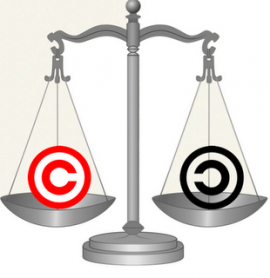
Likelihood of Confusion of Trademarks

Popular In Trademark
Trademark Registration Overview How To Trademark A Name Trademark Symbols Remedies To Trademark Infringement Defenses Against Trademark Infringement Paris Convention Tm Symbol How To Report Trademark Infringement Trademarks Common Law And Trademarks Types Of Passing Off The Madrid Agreement Overview How To Register A Trademark
When trademark infringement cases go to trial, the judge tries to determine the likelihood confusion taking place among consumers. Judges do not actually converse with consumers or take a poll among consumers, but they do use a set of criteria established by the Ninth Circuit Court of Appeals in the AMF, Inc v Sleekcraft Boats case from 1979.
In that case, the court created eight different circumstances that would help a judge determine if consumers are likely to be confused by trademark issues.
1. The similarity or strength of the marks: This refers to how similar the two trademarks look physically, how similar they sound and how similar the meaning of the trademark is after interpreted by the public. It is difficult to do much convincing in this element of determining if trademark infringement took place. An infringement defense would require a judge to not see or understand a trademark as similar in sight or meaning.
2. Similarities of good or services: The type of goods or services plays a role in possible confusion among trademarks. Similar trademarks with similar products such as Nike and Adidas having the same slogan minus a word or two would be a cause for confusion and trademark infringement. An infringement defense in this circumstance may be one company showing the registered slogan was regarding running shoes and the other company's slogan was regarding athletic pants. A judge still may find the products are too similar based on the brand and goods.
3. Similarity of marks: This is similar to the first element of possible confusion. This element refers to the visual similarities, not the overall meaning when examined from all angles. Two trademarks of the same design will be considered trademark infringement for one of the owners. There is little infringement defense that can take place if two markings look almost identical and on clearly was established first.
4. Evidence of actual confusion: This can be shown by actual confusion among consumers who mistook one company for another because of trademark confusion.
5. Marketing Intent: If a possible trademark infringer targets consumers in the same market as another trademark, the judge will view this as trademark infringement. Similar trademarks both aiming their advertisements at the same group will certainly cause a higher likelihood of confusion.
6. Physical proximity of good in the market place: If similar trademarks also sell their products in close proximity to one another, confusion among consumers is likely to occur. Proximity is another difficult element to disprove in an infringement defense.
7. Defendant's intent when the trademark in question was created: If a judge believes a defendant purposely created a similar trademark, there will be a definite likelihood of confusion among consumers and the judge will rule in favor of the plaintiff. The infringement defense must prove the existing trademark had no influence on the creation of the plaintiff's marking.
8. Likelihood of expansion of product lines: If both companies are expanding, especially at the same rate, confusion is likely to occur.
The first five elements are used in every trademark infringement case. The last three elements are used when the first five elements do not clearly state whether trademark infringement took place.
NEXT: Remedies to Trademark Infringement You Should Know





















